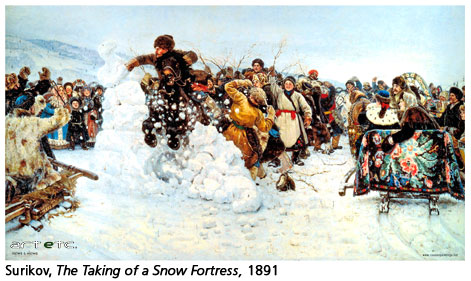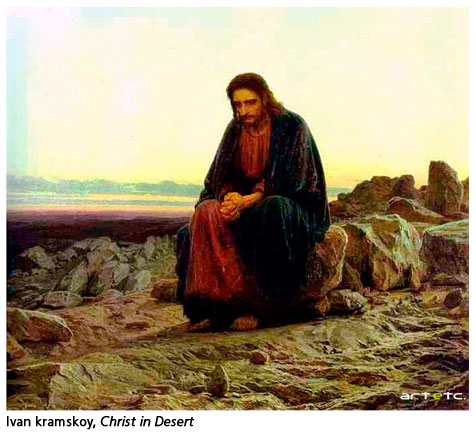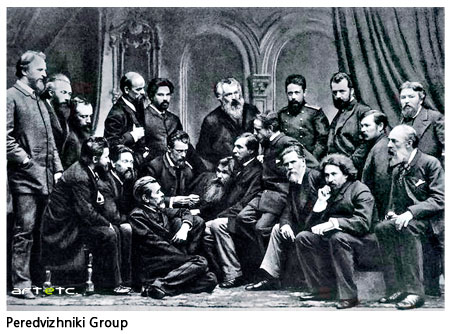- Publisher's Note
- Editorial
- What's Behind This Orange Facade!
- “First you are drawn in by something akin to beauty and then you feel the despair, the cruelty.”
- Art as an Effective Tool against Socio-Political Injustice
- Outlining the Language of Dissent
- Modern Protest Art
- Painting as Social Protest by Indian artists of 1960-s
- Awakening, Resistance and Inversion: Art for Change
- Dadaism
- Peredvizhniki
- A Protected Secret of Contemporary World Art: Japanese Protest Art of 1950s to Early 1970s
- Protest Art from the MENA Countries
- Writing as Transgression: Two Decades of Graffiti in New York Subways
- Goya: An Act of Faith
- Transgressions and Revelations: Frida Kahlo
- The Art of Resistance: The Works of Jane Alexander
- Larissa Sansour: Born to protest?!
- ‘Banksy’: Stencilised Protests
- Journey to the Heart of Islam
- Seven Indian Painters At the Peabody Essex Museum
- Art Chennai 2012 - A Curtain Raiser
- Art Dubai Launches Sixth Edition
- "Torture is Not Art, Nor is Culture" AnimaNaturalis
- The ŠKODA Prize for Indian Contemporary Art 2011
- A(f)Fair of Art: Hope and Despair
- Cross Cultural Encounters
- Style Redefined-The Mercedes-Benz Museum
- Soviet Posters: From the October Revolution to the Second World War
- Masterworks: Jewels of the Collection at the Rubin Museum of Art
- The Mysterious Antonio Stellatelli and His Collections
- Random Strokes
- A ‘Rare’fied Sense of Being Top-Heavy
- The Red-Tape Noose Around India's Art Market
- What Happened and What's Forthcoming
- Art Events Kolkata, January – February 2012
- Mumbai Art Sighting
- Art Bengaluru
- Delhi Dias
- Musings from Chennai
- Preview, February, 2012 – March, 2012
- In the News-February 2012
- Cover
ART news & views
Peredvizhniki
Issue No: 26 Month: 3 Year: 2012
by Navya Ashokkumar
“Revolutionary art is Constructive, Revolutionary art is International, Revolutionary art is Revolutionary” – Herbert Read in the article What is Revolutionary Art?
Protesting – Reformation has exercised its power over the decades and still continues to do so. It is impossible to read history without those two words coming alive and grabbing attention. The need for a change – A Reform, in the art scenario was evident in the end of the 18th century with The Itinerants or The Wanderers or often known as Peredvizhniki, a group of students from the Imperial Academy of Arts, who overthrew the academic, constrains and formed an artist cooperative. Influenced by the liberal ideas by Vissarion Belinsky and Nikolai Chernyshevsky the Peredvizhniki formed a Society for Travelling Art Exhibitions in 1870. The aim of the group was to reform the art scenario in Russia, an avant-garde ideology to reinforce the democratic ideals in the society through art. It also contributed in making art accessible for the general public - to view and to buy. During the years from 1871-1923, they showcased their works through 48 mobile exhibitions in St. Petersburg and Moscow. The intention was to reach out and educate the people about art and to raise consciousness about the socio – political conditions in the country, gradually they contributed to The Russian Liberation Movement and in raising a revolutionary wave in the society.
The Peredvizhniki contributed in advancing the outlook towards art and the artists. The artists in this group painted subjects that included the social lives of the people, often critically. The Emancipation Reform that was in its full swing at that time added more dimensions to the subjects that these artists choose to work on. The realistic works that these artists produced, which were mostly on subjects related to the serfs, became an important aspect to the emancipation reform and developed a revolutionary consciousness among the people in the society. It was a time in the history of Russia that reformation was in the air with full force – the serfs, the artists, politics, and economy were a part of a major transformation, all of which these artists documented in their works. The works that were produced were a reflection of the social situation in Russia without a camouflage, it was an indirect condemn to the social and political orders/the aristocratic lifestyle (in) of the society. The inequalities, the injustices, hierarchy, and also the beauty of life that the common was subjected to were seen in these works of art by the Peredvizhniki. When one looks at the history of Russia the importance of self expression or the voice of a common citizen was something that was cringed under the political order, hence the importance of the Peredvizhniki’s reform, in that epoch carries weight. They kicked up the dust this way which led to a lot many conflicts about art – its function and purpose, in the premise of a gallery space and the society.
The definition of art was redefined, art as a social and moral responsibility was quite a clear attitude in the works that they produced. The role that it played in the social lives of the people was quite clearly trimmed in accordance to the responsibilities that art held in the society. The art market and the economic objectives towards artists and their works were changed. The prominence as of just aesthetics in art was given a second thought; the subjectivity of the works became was more significant. Artists showcased a responsibility towards the society through the works that they produced; they did not paint for the purpose of money but for the welfare of the common good. Vladimir Stasov, a Russian art critic stated- "The artists striving to unite to setup their own society were not doing it for the purpose of creating beautiful paintings and statues for the sole purpose of earning money. They were striving to create something for the minds and feelings of the people". These artists were just not painting subjects of their interest but carried a strong political comment; it was a revolt, a revolution, a reform that they all were striving to attain for the general good.

 The Peredvizhniki artists such as Ilya Repin, Ivan Kramskoi, Vladimir Makovsky, Nikolai Ge, Vasily Surikov, Vasily Perov and Viktor Mikhailovich Vasnetsov reflected a clear understanding of the reformations that were in the public scenario – The Russian Revolutionary Movement. Their works were stylized in a unique manner but the message that these works carried did not differ much. All the artists in the group were realistic painters and most of them were good portraitists and landscape painters. The portraits that these artists produced were mostly of the heroic peasant or a few elite famous personalities. Pavel Tretyakov, a Moscow merchant played an important role in this movement, he was a regular buyer and commissioned the Peredvizhniki to produce portraits of famous people. Ilya Repin, known as one of the most important and famous artists of those times produced works that were realistic, which exposed the agony, the turmoil of the social conditions then. The peasant – serfs, became the main subject of his works. The characteristic details, the psychological depth of the represented figures were a reflection of social and the political moods that were alive. His works were a clear documentation of the situation in Russia. Repin’s works carried the fragments, the aura, the persona- the sole of a person and situation was absorbed and executed. ‘They did not expect him’ is one such revolutionary work which portrays an unexpected return of a political exile home. The work possesses the skill, in which the compositional representation of the characters and the subject addressed- put together, give the onlooker a deep insight of the work. The works of Ivan Kramskoi echoed the democratic ideals which the artist himself and the Peredvizhniki altogether seized in their works. Kramskoi was the leader of the ‘Russian Democratic Art Movement’. The realistic portraits which the artist produced depicted the heroic peasant. The artist painted religious subjects which intertwined the social situations as a metaphor. Besides Kramskoi, Nikolai Ge also used religious subjects as a metaphor to represent the situations which were dominating the society then.
The Peredvizhniki artists such as Ilya Repin, Ivan Kramskoi, Vladimir Makovsky, Nikolai Ge, Vasily Surikov, Vasily Perov and Viktor Mikhailovich Vasnetsov reflected a clear understanding of the reformations that were in the public scenario – The Russian Revolutionary Movement. Their works were stylized in a unique manner but the message that these works carried did not differ much. All the artists in the group were realistic painters and most of them were good portraitists and landscape painters. The portraits that these artists produced were mostly of the heroic peasant or a few elite famous personalities. Pavel Tretyakov, a Moscow merchant played an important role in this movement, he was a regular buyer and commissioned the Peredvizhniki to produce portraits of famous people. Ilya Repin, known as one of the most important and famous artists of those times produced works that were realistic, which exposed the agony, the turmoil of the social conditions then. The peasant – serfs, became the main subject of his works. The characteristic details, the psychological depth of the represented figures were a reflection of social and the political moods that were alive. His works were a clear documentation of the situation in Russia. Repin’s works carried the fragments, the aura, the persona- the sole of a person and situation was absorbed and executed. ‘They did not expect him’ is one such revolutionary work which portrays an unexpected return of a political exile home. The work possesses the skill, in which the compositional representation of the characters and the subject addressed- put together, give the onlooker a deep insight of the work. The works of Ivan Kramskoi echoed the democratic ideals which the artist himself and the Peredvizhniki altogether seized in their works. Kramskoi was the leader of the ‘Russian Democratic Art Movement’. The realistic portraits which the artist produced depicted the heroic peasant. The artist painted religious subjects which intertwined the social situations as a metaphor. Besides Kramskoi, Nikolai Ge also used religious subjects as a metaphor to represent the situations which were dominating the society then.

The reformation of the church in the mid 17th century, the corruption, the inevitable war between the people of the same nation – ‘A Religious Divide’, added further complications in the lives of the ordinary and the elite, Vasily Surikov produced works that pronounced these complications in the lives of the people. The works of Vladimir Makovsky, Viktor Mikhailovich Vasnetsov and Vasily Perov reflected the urban lives of the people, the poverty, misery, and the grief-stricken labor. Although the works surficially do not look intense subjectively, a further perception gives the onlooker an insight of the dense irony that the works hold.
 The Peredvizhniki artists also possessed the skill in the genre of realistic landscape painting, artists like Alexei Savkasov, Issac Levitan, Vasily Polenov, Ivan Shishkin and Arkhip Kuinji were among the few. Though the works that these artists produced were purely not related to the social and the political reforms, these works celebrated the beauty of Russia. On a second thought these works stand as a contradicting metaphor and reminiscence to the paintings that the other artists in the group produced. Vasily Polenov gave landscape painting a new dimension - as a war artist by taking part in the Russo - Turkish war and pictorially recording the war scenario. The artists who have documented the war scene in the past have contributed in spilling out details that could not be articulated in literature or any other medium of communication. The dimensions that the visual language adds in articulating these subjects have a dense sense of discomfort onto the onlooker – the poverty, the bloodshed, suffering, fighting, preparing for the war, celebrating or a destroyed empty space of surrender - gives not just a visual account of the happenings in a war but also plants the thought on the fundamental problems of human existence and the Peredvizhniki worked on bringing forward these problems through the works of art that they produced.
The Peredvizhniki artists also possessed the skill in the genre of realistic landscape painting, artists like Alexei Savkasov, Issac Levitan, Vasily Polenov, Ivan Shishkin and Arkhip Kuinji were among the few. Though the works that these artists produced were purely not related to the social and the political reforms, these works celebrated the beauty of Russia. On a second thought these works stand as a contradicting metaphor and reminiscence to the paintings that the other artists in the group produced. Vasily Polenov gave landscape painting a new dimension - as a war artist by taking part in the Russo - Turkish war and pictorially recording the war scenario. The artists who have documented the war scene in the past have contributed in spilling out details that could not be articulated in literature or any other medium of communication. The dimensions that the visual language adds in articulating these subjects have a dense sense of discomfort onto the onlooker – the poverty, the bloodshed, suffering, fighting, preparing for the war, celebrating or a destroyed empty space of surrender - gives not just a visual account of the happenings in a war but also plants the thought on the fundamental problems of human existence and the Peredvizhniki worked on bringing forward these problems through the works of art that they produced.
The Itinerant artists possessed the skill of reflecting the psychological anatomy of a situation; they made an attempt to touch the sensitive grey area of the situations that were in full swing then. The works were clearly democratically inclined and were an attempt to educate and raise consciousness amongst the people- A Revolution through Art. Art works were a complete manifestation of the political mutation. The purpose of an art work slowly shifted its angle; the discourse of (on) art was redefined. It was a means to spark thoughts on the problems of democracy and the injustice that most of them were subject to. The indirect interplay of reasoning, thought, philosophical queries within the self, the questions of democracy, religion etc was an intentionally ignited idea by the Itinerant artists onto the onlooker to relook and question existence in this frame of thought. The function and the role of art in the society were brought under a new light. The works became a part of the political movement. The socio – political problems - The Civil Wars, The Reformation of the Church, The Emancipation Reform, the cry for Democracy, the growing social injustice between the elite and the poor became a part of the works, therefore making art works politically questioning. This revolutionary approach in art making, contributed in the Russian Liberation Movement and the growth of revolutionary consciousness in the society.

Art throughout the centuries have had an influence directly or an indirectly towards or against the social, economic and political situations. Weather the artist is influenced or not the changes are influenced in the work that they produce. Protesting against a norm, an injustice, a change and voicing out an opinion has been there, still persists to be and will always. When one looks at the works of art throughout the centuries the socio-political fragrance in the works has been persistent. The purpose and the function that art and the artists in the society are clearly evident when the sole purpose of the revolutions and reforms that took charge during the specific time era is looked upon at. This group of revolutionary students – The Peredvizhniki contributed in altering and redefining the same.